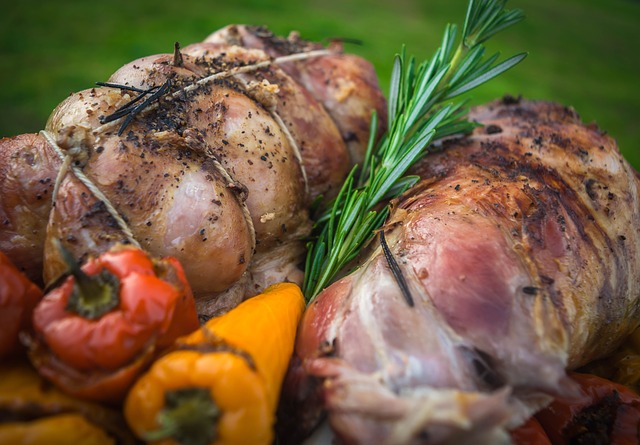
In recent years, I have started using a meat thermometer to tell when my meat is cooked to perfection – and they work! There is quite a science behind it and the degree of “doneness” all comes down to the internal temperature of the meat. Meat thermometers are ideal for roasts of any sort, and for steaks. So I’m finally doing what my chef clients have been doing for years.
For the best results keep in mind these points:
- Use the thermometer just before the estimated cooking time is up.
- Remove the roast from the oven or steak from the pan just below the goal temperature, as the internal temperature of the meat will rise on resting.
- The end of the thermometer should be inserted into thickest part of the roast or steak away from any bone or fat as these areas hold more heat.
If you’re cooking an odd-shaped cut of meat, the cooking heat won’t reach all the areas at the same time. To ensure it has cooked correctly, you may find that taking two readings of the meat in different areas will help achieve the desired “doneness”. The general rule of thumb is to cook these cuts to well-done internal temperatures.
Stuffed and rolled meats require longer roasting times as they have more layers for the heat to penetrate. These are best cooked to well done. The internal temperature of the meat should be taken in two different places.
As steaks are thin in comparison with roasting cuts, avoid piercing right through the steak to the hot cooking surface – this will really give you an inaccurate reading
When your meat is done, the internal temperature of your meat will be:
- Rare = 45-50°C
- Medium rare = 55-60°C
- Medium = 60-65°C
- Well done = 70-75°C
- Very well done = 75-80°C
Always ensure your meat thermometer has been properly cleaned after use.
There are many different meat thermometers on the market. Whether you use a manual or a digital thermometer, they will help to tell you when your meat is perfectly cooked so you can enjoy your steak or roast. The two main types of meat thermometer people use at home are:
- Ovenproof thermometers – ideal for roasts. These are inserted into the thickest part of the roast and half way into the thickness of the meat before it goes in the oven. They remain in the meat while it’s cooking. Don’t insert the probe near bone or fat.
- Instant-read thermometers – these are inserted into the meat for only 30-40 seconds (depending on the brand). For an accurate reading, insert the thermometer into the thickest part of the meat, away from bone. Once the meat is within 5-10 degrees of your desired temperature, it should be checked every 5 minutes. These thermometers are available in digital models as well.
Happy cooking, and check out our range of fresh meat you can buy online without fuss.

